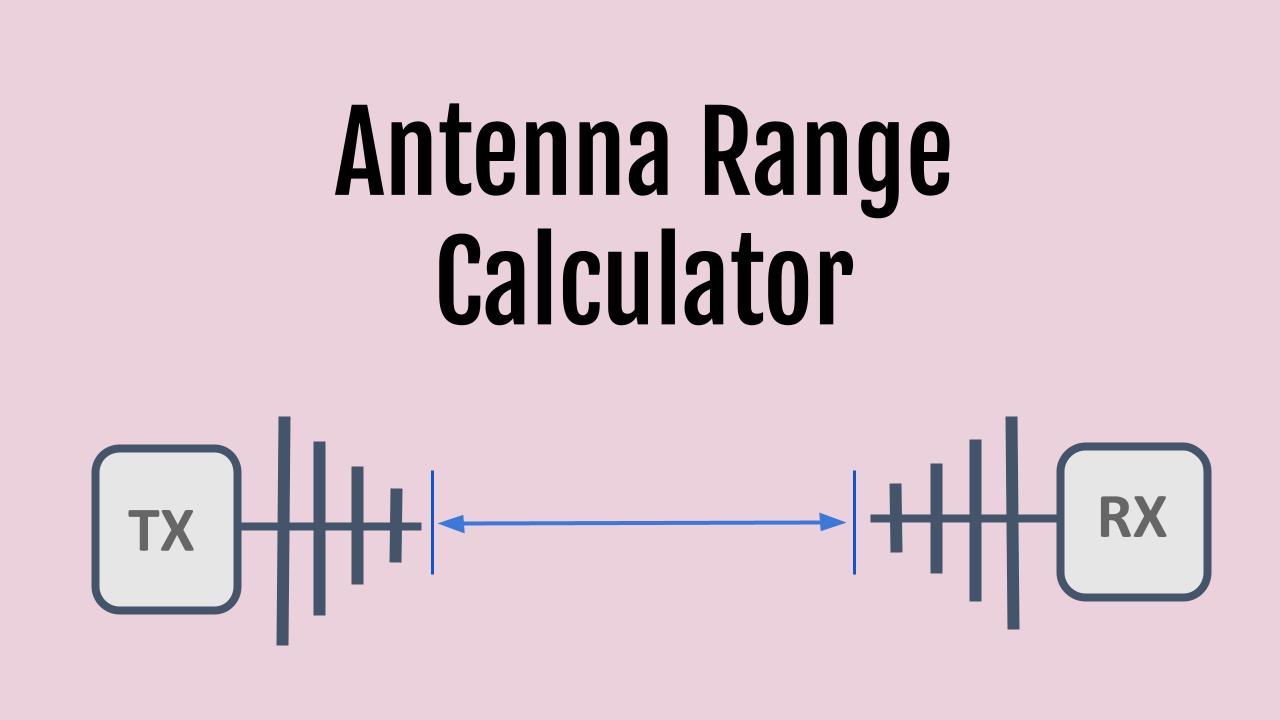This tool computes the maximum range or distance that can be achieved in a communication system. It is based on the Free Space Path Loss (FSPL) calculator and equations [1].
The system includes a transmitter, transmit antenna, receiver and receive antenna.
To calculate the max distance, enter the following:
- Frequency of operation (Hz/KHz/MHz/GHz)
- Transmit Power (dBm)
- Transmit Antenna Gain (dBi)
- Receiver Sensitivity (dBm)
- Receive Antenna Gain (dBi)
- Total Cable and Other Losses (dB)
Formula
The calculator uses the Free Space Path Loss (FSPL) equation:
FSPL = 20*Log10(d) + 20*Log10(f) + Lc + 20*Log10(4π/c) – GTx – GRx
The FSPL is also the difference between the Transmit and Received Powers. This relationship is used to find the distance d in the equation above.
Example Range Calculation
At a frequency of 2450 MHz (ISM band) and transmit power of +20 dBm, let’s take a look at the range of a Wi-Fi Access point in free space.
With a receiver sensitivity of -90 dBm, transmit and receive antenna gain of 0 dBi, and 0 dB cable loss, the maximum range is 3.1 km or 1.9 miles.
Important to remember that this calculation is outdoors and free space which represents an ideal signal propagation condition.
💡 The Free Space Path Loss Calculator assumes ideal conditions. In other words there is an assumption of no obstructions and no radio interference from neighboring access points or other ISM band devices. Use this calculator for a more realistic estimate of indoor Wi-Fi range.
Assuming indoor conditions, using the indoor calculator, the same level of received signal is achieved at only 55 meters. A much smaller range. This is to be expected as signals are attenuated more indoors than in free space.
How to use the calculator
Below is a list of the terms used in the calculator and what each of them mean.
Frequency of operation
This is the frequency at which the communication system operates. At lower frequencies, wavelength is commonly used and if that’s the case, then use the wavelength to frequency converter.
Transmit Power
This is the power at the output connector of the transmitter. It is usually specified in dBm. However many vendors specify this quantity in Watt. Convert from Watt to dBm.
Transmit Antenna Gain
This depends on the type of antenna used and is expressed in dBi (dB relative to isotropic antenna).
Total Cable and Other Losses
This includes losses between connectors and antennas. If RF Splitters are used, the loss should be accounted for as well. It is specified in dB. Use this calculator to find the loss due to antenna cable.
The sum of the Transmit antenna power and Gain minus cable and connector losses is also called Effective Isotropic Radiated Power or EIRP for short.
Receiver Sensitivity
Minimum level of input signal that a radio receiver can detect and demodulate. Use this calculator to find the sensitivity as a function of temperature, SNR and receiver noise figure.
Receive Antenna Gain
Depends on antenna used and is expressed in dBi. In cases where the signal is from a particular direction, a high gain antenna (8 dBi for instance) can be used. This allows focusing of energy instead of receiving from all directions. Antenna gain can be calculated from the Antenna Factor and frequency of operation.
References
[1] Free Space Path Loss on Wikipedia
